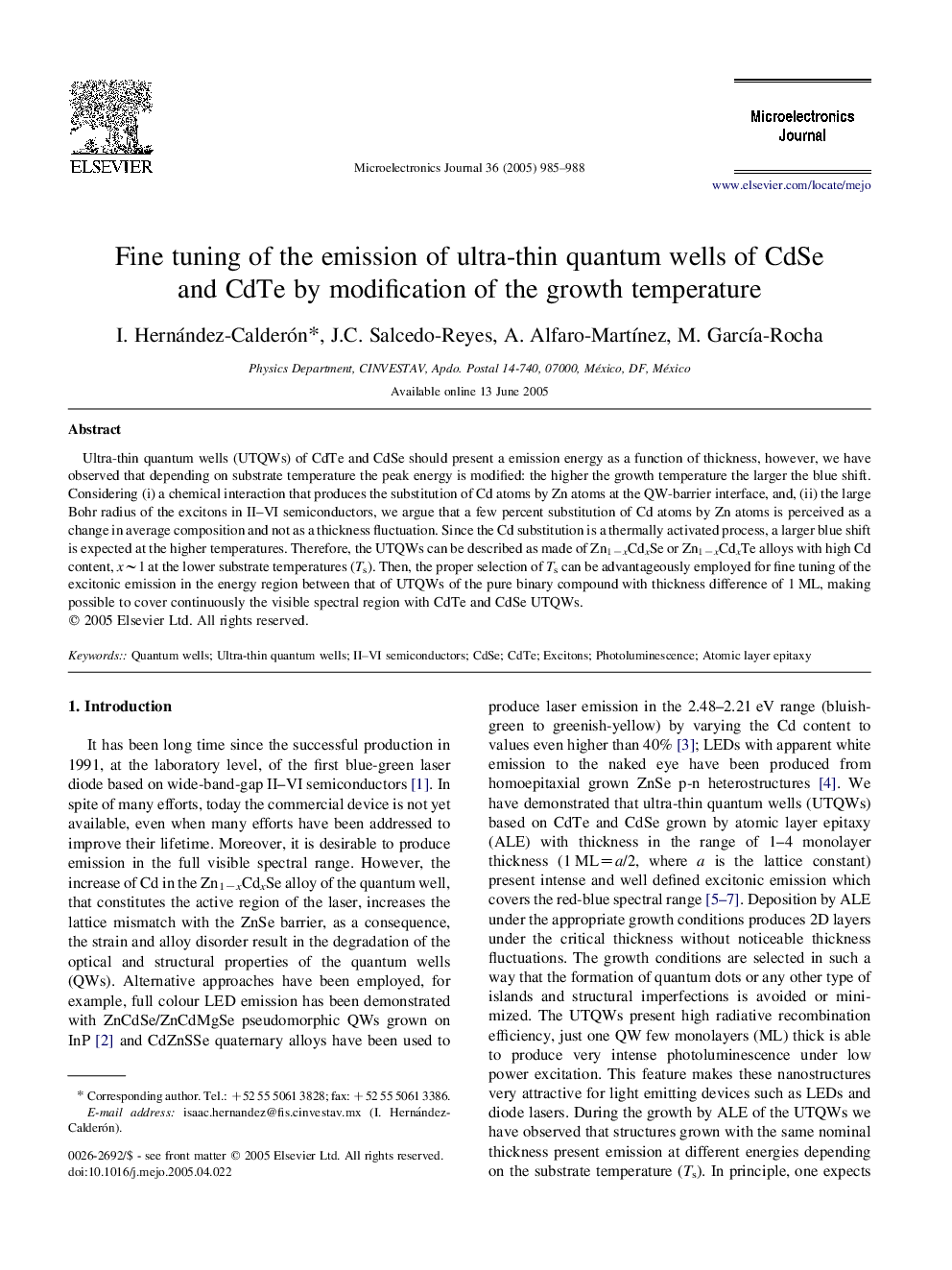| Article ID | Journal | Published Year | Pages | File Type |
|---|---|---|---|---|
| 10364474 | Microelectronics Journal | 2005 | 4 Pages |
Abstract
Ultra-thin quantum wells (UTQWs) of CdTe and CdSe should present a emission energy as a function of thickness, however, we have observed that depending on substrate temperature the peak energy is modified: the higher the growth temperature the larger the blue shift. Considering (i) a chemical interaction that produces the substitution of Cd atoms by Zn atoms at the QW-barrier interface, and, (ii) the large Bohr radius of the excitons in II-VI semiconductors, we argue that a few percent substitution of Cd atoms by Zn atoms is perceived as a change in average composition and not as a thickness fluctuation. Since the Cd substitution is a thermally activated process, a larger blue shift is expected at the higher temperatures. Therefore, the UTQWs can be described as made of Zn1âxCdxSe or Zn1âxCdxTe alloys with high Cd content, xâ¼1 at the lower substrate temperatures (Ts). Then, the proper selection of Ts can be advantageously employed for fine tuning of the excitonic emission in the energy region between that of UTQWs of the pure binary compound with thickness difference of 1Â ML, making possible to cover continuously the visible spectral region with CdTe and CdSe UTQWs.
Keywords
Related Topics
Physical Sciences and Engineering
Computer Science
Hardware and Architecture
Authors
I. Hernández-Calderón, J.C. Salcedo-Reyes, A. Alfaro-MartÃnez, M. GarcÃa-Rocha,
